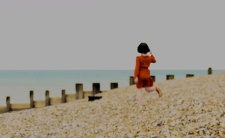The best and worst of experimental theatre
Ring – Fuel @ Battersea Arts Centre, until 11 October 2014
Karaoke – Sleepwalk Collective @ Battersea Arts Centre, until 18 October 2014
It is presumably with a sense of playful creativity that Battersea Arts Centre has paired Ring and Karaoke as an unofficial double-bill, meaning the adventurous theatre-goer can head straight from Fuel’s Ring in the Council Chamber in time to catch the start of Sleepwalk Collective’s Karaoke in the Staff Recreation Room.
Even the anodyne room names, a hangover from the BAC’s municipal past and a world away from the bright lights of the West End, are appropriate for two shows that, in very different ways, explore the nature of theatre as performance. For Spanish-English company, Sleepwalk Collective, this exploration is at the very heart of its show but for Fuel it is a by-product of their production.
David Rosenberg and Glen Neath worked with neuroscientists at the UCL Ear Institute in order to grasp how the human brain manages to map the location of sound and have put their learning to good effect in Ring. Set in complete darkness and told to the audience through a pre-recorded audio track via headphones, there is no live performance but we are a long way from the world of the Radio 4 afternoon play. The sound design is very impressive and, in the darkness, through the headphones, you get a fully-rounded 360 degree performance that could easily be mistaken for live action.
 The darkness is integral to the plot and so there is not a disconnect with the fact you are sitting in a room with the lights off. The functional surroundings are also important because for the concept to work people need to forget they are an audience member and believe that they could be part of the story. Dwelling on this would spoil the experience but the play hinges on ideas about group therapy and what people may share in the anonymity that darkness provides.
The darkness is integral to the plot and so there is not a disconnect with the fact you are sitting in a room with the lights off. The functional surroundings are also important because for the concept to work people need to forget they are an audience member and believe that they could be part of the story. Dwelling on this would spoil the experience but the play hinges on ideas about group therapy and what people may share in the anonymity that darkness provides.
There is a creeping menace within the action that plays on the best type of horror – not one of shocks but a genuine psychological unease. It is that moment of quiet realisation that can be terrifying; the end of The Vanishing or the rich seam of Japanese psychological horrors through the late 90’s. You become, it seems, a central player in the story; it revolves around you and the room itself becomes alive with an action that you know can’t be there but that becomes real through the connections the brain will force you to make.
Ultimately Ring will work to the degree that the individual invests in the concept, any feeling of unease will only come from your own mind. The words and sounds are played directly into your head, and whilst everyone is listening to the same story they are listening to it within their own world. As the narrative unfolds, and scenes are played out, it is still only a sketch, it is the responsibility of the audience to colour the picture in. The success with which you do so will determine how successful you find the show.
